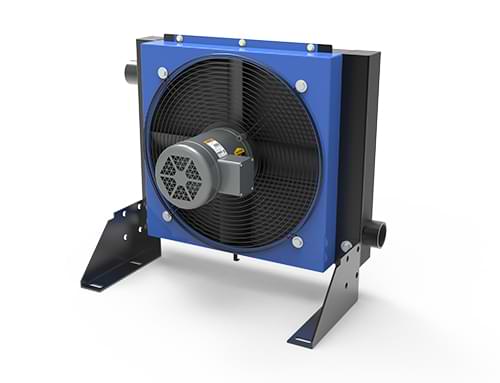Aftercoolers for Pneumatic Tools
The compressed air drives the tool’s internal mechanisms, providing consistent power without the need for heavy motors or electrical cords. This makes pneumatic tools lightweight, safe in hazardous environments, and ideal for tasks requiring high torque or prolonged use. However, the performance and longevity of these tools depend heavily on the quality of the compressed air, which is where an aftercooler plays a critical role.
Water Cooled Aftercoolers
Compressor Cooling
- Fixed or Removable Tube Bundles
- Material Options Available
- Standard and Custom Options

Air Cooled Aftercoolers
Compressor Cooling
- Use Ambient Air to Cool
- Variety of Motor Options
- Standard Pressures of Up To 250 psi

Moisture Removal for Pneumatic Tools
When air is compressed, it heats up significantly due to the energy involved in reducing its volume. This hot, compressed air often contains moisture vapor, oil, and other contaminants picked up during the compression process. If this air is delivered directly to pneumatic tools without treatment, it can cause corrosion, wear, and malfunctions over time. An aftercooler is a heat exchanger installed downstream of the compressor to cool the compressed air before it reaches the tools. By lowering the air temperature, the aftercooler causes water vapor to condense into liquid form, which can then be removed through a separator or drain, ensuring cleaner and drier air.
The importance of an aftercooler can be broken down into several key benefits:
- Moisture Reduction: Cooling the air removes excess humidity, preventing rust and corrosion in tool components.
- Improved Efficiency: Dry air maintains consistent pressure and flow, optimizing tool performance.
- Extended Tool Life: Cleaner air reduces wear on moving parts, minimizing maintenance costs.
- Contaminant Control: Aftercoolers help filter out oil and debris when paired with additional filtration systems.
Without an aftercooler, hot and moist air can degrade pneumatic tools rapidly. For instance, in automotive shops or manufacturing plants where tools run continuously, untreated air might lead to clogged valves or seized pistons, halting production. Additionally, in precision applications like spray painting, moisture in the air can ruin finishes, costing time and materials.


